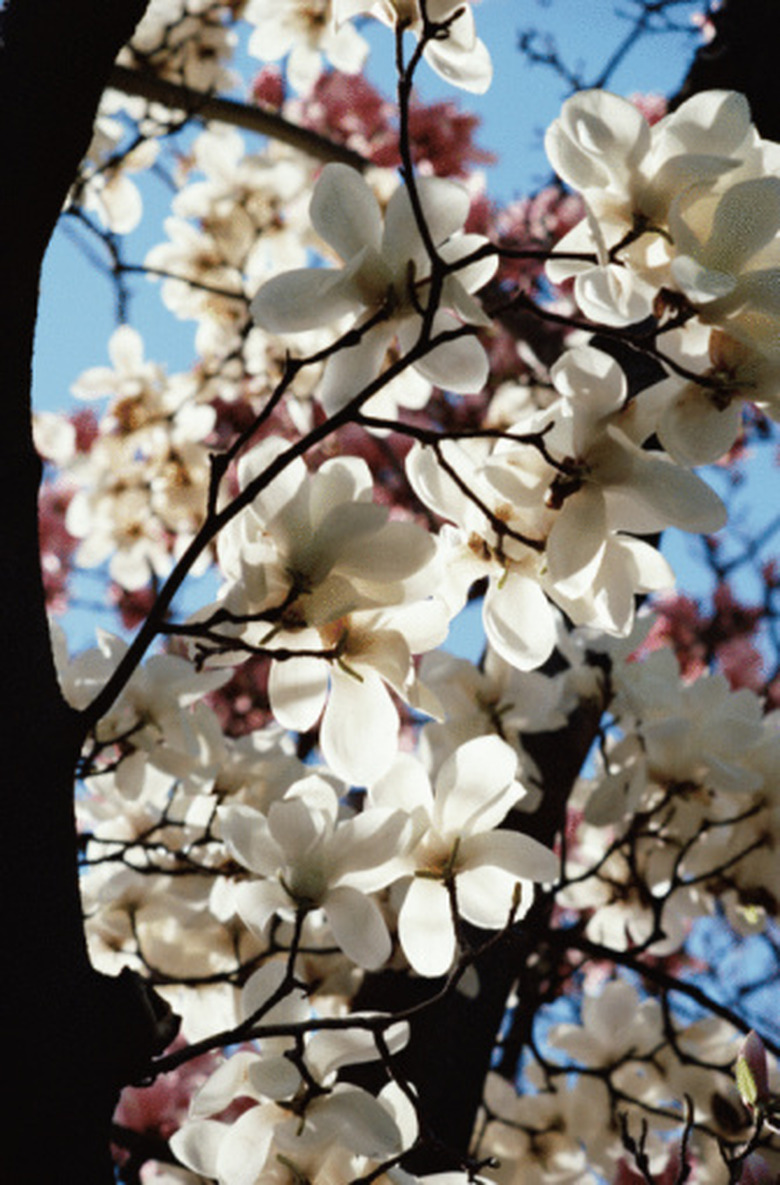Facts About The North Star Cherry Tree
Few trees add both ornamental beauty to the landscape and fresh flavor to your table to the degree that the North Star cherry does, with its homegrown cherries you can pluck straight off the tree. Cherry trees come in two main categories – sweet and tart. The North Star cherry tree is a type of tart cherry cultivar that matures at a height of less than 12 feet, making it a suitable addition for small yards and limited areas in the landscape.
History
The University of Minnesota introduced the North Star cultivar in 1950. Like other types of dwarf fruit trees, this tree results from both genetic engineering and grafting. The rootstock and the scion combine to make this individual variety of tart cherry.
Characteristics
North Star cherry trees begin producing blossoms about two years after planting. Abundant white blossoms that cover the small tree in early spring add a pleasant aroma to the nearby landscape. The fruit begins maturing late in June or early in July, adding a splash of dark red to the canopy. The fruits are juicy and suitable for baking or consuming fresh. This variety of cherry tree is self-pollinating.
- Few trees add both ornamental beauty to the landscape and fresh flavor to your table to the degree that the North Star cherry does, with its homegrown cherries you can pluck straight off the tree.
- The North Star cherry tree is a type of tart cherry cultivar that matures at a height of less than 12 feet, making it a suitable addition for small yards and limited areas in the landscape.
Requirements
Like most types of fruit trees, the North Star cherry tree prefers a location that provides full sunlight. Although it tolerates light shade, planting this below the dense canopy of a large tree may result in poor growth with minimal blossoms and fruit. This cherry tree requires a climate with moderate temperatures between USDA Hardiness Zones 4 and 8. Growing it in colder climates can result in plant loss, while growing it in warmer climates may result in a mass of foliage without flowers or fruit, resulting from an inadequate chill period.
Care
North Star cherry is a hardy variety of dwarf tree that requires minimal care. Keeping the soil slightly moist near the roots provides suitable hydration. An annual application of fruit tree fertilizer early in the spring helps guard against nutritional deficiencies and can help boost flower and fruit formation. Pruning away crowded branches and broken limbs ensures good airflow and reduces the spread of disease in these ornamental and fruitful cherry trees.
- Like most types of fruit trees, the North Star cherry tree prefers a location that provides full sunlight.
